Galaxie 500 - Galaxie 500
by Jon Rogers
published: 28 / 3 / 2010
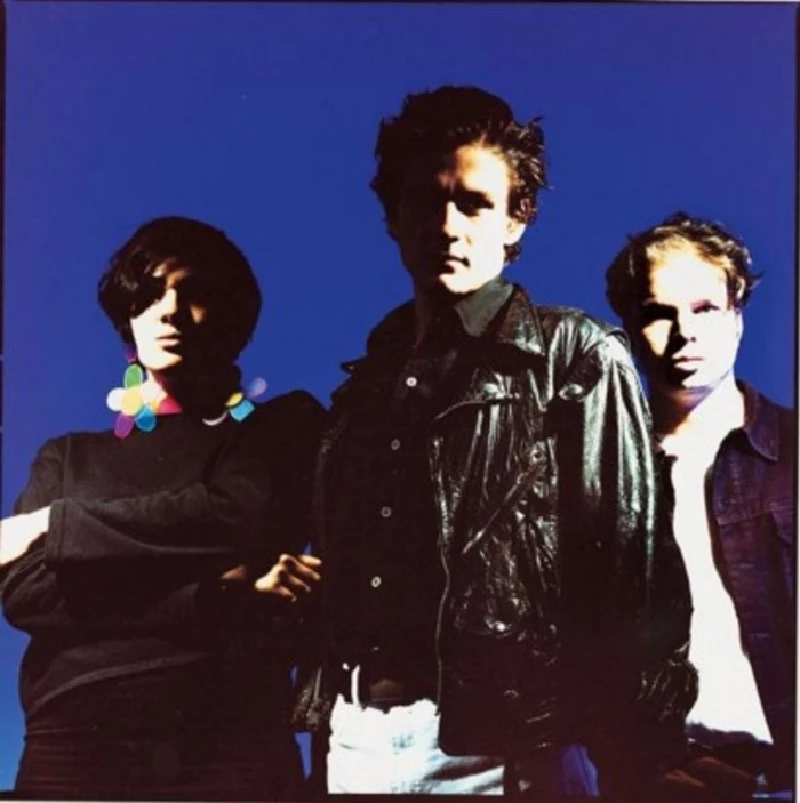
intro
Jon Rogers examines the short, but influential career of late 80's/early 90's American indie rock trio Galaxie 500, whose three albums have just been reissued
There was always something elusive about the US trio Galaxie 500. Something you couldn’t quite put your finger on or tie down. Certainly Dean Wareham, Damon Krukowski and Naomi Yang weren’t part of the mainstream but far too enigmatic and gentle to be fully welcomed in to those indie types in the late 80s and early 90s when music was all about ‘Madchester’ or grunge. Their blend of Jonathan Richman, the Velvet Underground – particularly the third album – and the likes of Spacemen 3 resulted in a sort of enchanting sticky whine that enthralled immediately and had the listener captivated as they moved from the almost rock-orientated ‘Fourth of July’ to the achingly serene ‘Isn’t it a Pity’. “There was always an air of unreality for me about Galaxie 500,” wrote Krukowski in the liner notes for the band’s box set. “What started as a slightly absurd joke (playing in a band!) became more ridiculous but less funny as the band achieved the successes it did.” Seeing as the band went on to release three albums and gained acres of critical praise not bad for a band that initially had a goal of seeing one of their singles achieve the dizzy heights of the bargain bin. All three had gone to high school and then college in Boston and as first years in college Wareham and Krukowski started a band up even though Damon didn’t even have a drum kit but managed to borrow one from fellow ‘freshman’ Conan O’Brien. The rudimentary punk band bashed out cover versions of the Sex Pistols’ ‘Submission’ and a variety of Joy Division and Clash songs as well as the theme tune from ‘Spiderman’. Apparently they entered a battle of the bands competition and finished last in every category, including ‘looks’. Yang, being slightly younger, hadn’t started college yet but would the following year and started designing the band’s posters and backdrops. After graduating Krukowski and Yang carried on studying for a post-graduate degree – Yang in architecture and Krukowski in English – while Wareham moved back to New York. Plans were made to start another band and ads went out looking for a new bass player. It was a fruitless search though and one time when Wareham was up in Boston Yang said that if they couldn’t find anyone she’d do it despite never having played the instrument before. According to Krukowski despite her lack of ability “we immediately sounded better than we ever had” during a rehearsal in a spare room at Wareham’s parents house. During this meeting they apparently played ‘Just My Imagination’ and a cover of Bob Dylan’s ‘Knockin’ on Heaven’s Door’. Inspired by the new line-up Wareham decided to move back to Cambridge and the band made their first appearance during the summer of 1987 at the going away party Wareham’s flatmate’s threw for him on Front Street in Manhattan. Although Wareham can’t remember any of the four or five songs played he does remember being pleased that none of his strings broke on his guitar. At the time he was making ends meet by working in the Elmer Holmes Bobst Memorial Library at New York University. On 11 August 1987 the band made their first visit to a studio, 6/8 in New York where they would record three songs with engineer Perkin Barnes –‘Walking Song’, ‘The Other Side’ and ‘On the Floor’ in an attempt to pick up some attention. After some serious rehearsals the band made their first public appearance at Chet’s Last Call on 1 October, which was above a sports bar across the road from the Boston Garden. Even the other band on the bill heckled them, calling them “college boys”. Despite a rather inauspicious beginning the band managed to pick up some college radio play on stations like WHRB in the local area with their demo tape. Around this time the band would regularly attend gigs, going to see the likes of Moe Tucker (the former drummer in the Velvet Underground), Jad Fair as well as the reunion of Pere Ubu and a particular favourite Jonathan Richman. While their version of ‘Don’t Let Our Youth Go to Waste’ is well known, their cover of ‘Back in Your Life’ isn’t. The band would practice in an old building on Albany Street where the lift was often broken. “We had to wake Frankenstein, the old man who lived in the basement who actually built the elevator years ago. He was covered in dirt and his white hair stood straight up on end. He rolled his own cigarettes.” A second night at Chet’s was forthcoming on 7 December with the band making the princely sum of $6. Then in January the next year they didn’t fare much better playing three nights upstairs at The Rat for $30. Maverick producer Mark Kramer, invariably known only by his surname, came to the band’s attention after they read an article by him in a fanzine and so called him up and went down to his studio Noise New York on lower West Broadway in Manhattan. “It was up three huge flights of stairs, and Kramer never helped you carry anything up,” recalled Krukowski. “He smoked an epic amount of pot, and seemed both bored and bemused the whole time we were there. I don’t think our first session was more than a few hours. He barely said a word but put a remarkable amount of reverb on the vocals to ‘Tugboat’.” According to Wareham, Kramer wasn’t that impressed initially, thinking they were retarded when they started to play. This recording would become the band’s first single, backed with ‘King of Spain’ which would be put out by Marc Alghini who had started up his own record label, Aurora. The 7” single came on blue vinyl and looked “beautiful” to Wareham. Copies were then mailed out to radio stations and magazines. The idea then was to record an EP so the band went back to Kramer’s Noise studio but recorded so much material that it was decided to put out an album that eventually became ‘Today’. According to Krukowski the entire album was recorded for the grand sum of $750 as Kramer would record everything as a first take. Even the basic tracks, according to Wareham, were recorded in about four hours on the first day with the second day set aside for vocals and lead guitars, with almost everything being done in one take. But Kramer soon became an integral part of the band, almost like a fourth, unseen, member. “I remember continually egging him on to add whatever he wanted,” remembered Krukowski. “But he always seemed surprised we didn’t mind. He taught us so much in the studio – so many of the original ideas for backing vocals, guitar effects and percussion were his. We would come in with a song and play it just as we played it live; but he would treat that as a basic track and start making suggestions. To some degree, I think we became the band that Kramer imagined in the studio. The falsettos, weirdly placed leads, backward tracks, deliberate percussion arrangements... it became our sound, but we took it from things Kramer had done that we liked.” There were aspects of that recording that even Wareham still remains baffled by: “I remember being completely lost during ‘Don’t Let Our Youth Go to Waste’ – there are strange harmonic overtones at the end of that song that I was never able to replicate – sometimes it’s good to have no idea what you are doing. Kramer slowed the tape down on ‘Oblivious’ so I could hit the high notes. That’s why I sound like a chipmunk.” ‘Today’, released in October 1988, set out the band’s calling card very neatly with Kramer carefully capturing the band’s fragile amateurism with stand out tracks being ‘Tugboat’ and the cover of Richman’s ‘Don’t Let Our Youth Go to Waste’ along with the memorable ‘Oblivious’. The band’s influences were quite clear: the Velvet Underground’s third album being the most obvious along with the Dream Syndicate’s desire for extended, dreamy workouts as well as jazz classics like Miles Davis’ ‘Kind of Blue’ and Wareham had clearly being paying attention to Television’s Tom Verlaine as well as the Byrds more psychedelic experiments along the lines of ‘Eight Miles High’. At times though it just all sounded a bit too timid and apologetic to make people stand up and listen. Its release was completely overshadowed, even in the non-mainstream music world by releases like Sonic Youth’s opus ‘Daydream Nation’ and the debut from the latest press darlings The Sugarcubes with ‘Life’s Too Good’. And guitars were definitely in with My Bloody Valentine’s ‘Isn’t Anything’ and the Pixies ‘Surfer Rosa’ as well as Mudhoney’s ‘Superfuzz Bigmuff’ and Dinosaur Jr’s ‘Bug’. People were making a noise to be heard but Galaxie 500 weren’t bothering to make much of a racket. Even more mainstream music was coming up with some inventive releases REM, now on a major label hit the big time with ‘Green’ while Leonard Cohen stated ‘I’m Your Man’ and the Waterboys produced their classic ‘Fisherman’s Blues’ and Tracy Chapman had a major hit on her hands with her eponymous debut. But Geoff Travis, head of Rough Trade in the UK, was one of those people that bothered to listen and offered the band a European deal. Eventually the band would gain a warmer reception over here than in their native USA. “We flew to England so many times Pan Am started seating us in business class for free,” claimed Krukowski. But despite that little luxury initial tours were pretty uncomfortable with the band sleeping on people’s floors or in grubby hotels. But while the band started to build a name for themselves in Europe over in America nothing much was happening and remained in Krukowski’s words “low key”. Their only offer of a deal came from Slash – the label not the Guns and Roses guitarist – and so the band would eventually sign a worldwide deal with Rough Trade’s US arm. That though would prove to be a disaster when the company collapsed in the autumn 1991 taking the band’s albums and royalties down with them. As a side note Krukowski would later attend an auction of the label’s assets and would go on to place the only bid for their contracts and so buy the rights back to their own songs. The band decided to capitalise on their tentative beginnings by returning to Kramer’s Noise New York studio, initially in February 1989 for three days, for what many would come to see as the band’s opus, the album ‘On Fire’. In that first session the band recorded ‘Strange’, ‘When Will You Come Home’, ‘Leave the Planet’ and ‘Plastic Bird’ all of which would appear on the album along with ‘Cold Night’ which would then appear on the reissues put out by Rykodisc. The album would then be completed in August with the sessions including an alternate take of ‘Blue Thunder’ along with the covers of ‘Victory Garden’ and ‘Ceremony’ as well as ‘Maracas Song’. Yang has very vivid memories of that time: “I remember so clearly being in my room at my parents’ house in New York, listening to the dub of the final mixes while lying in bed in the dark room. All I had to listen to the tape on was a tinny cassette player, running out of batteries. The light from the streetlight came in the window that night, as it had all my life. Yet it all took on a magical quality for me as I listened and listened. I was so happy and proud of what we had done. Kramer’s production had, as usual, taken the songs to a level I could have never imagined in our rehearsals. We had made something so real. I think I listened all night. I was so astonished.” Between the album being recorded and released the band went on tour, mainly around the east coast of America which largely went unnoticed – a grand total of 15 people turned up when they played Pittsburgh. One endearing aspect was the theme of adolescence that had started with the cover of ‘Don’t Let Our Youth Go to Waste’. On songs like ‘Snowstorm’ and ‘Another Day’ the trio captured that youthful existentialist angst and weariness but still had a childlike wonder to it. It’s that balance of still being awed by events and being blasé about it all too that endears. As such the album is littered with questions but no answers: Isn’t it a pity? When will you come home? Why does everybody look so funny? Why does everybody look so strange? That experience also matched their musical ability. With Yang admitting: “Listening to ‘On Fire’ I felt that my bass playing finally had a real direction, as did our songwriting and our sound. I suppose that moment was the liminal moment – between musical naiveté and experience.” “When bands grow up,” Wareham told 'City Limits' in November 1990. “Generally that means they’ve made a shit record like the Replacements. Or Bob Mould.” ‘On Fire’ was the sound of a band trying not to let their youth go to waste. With the release of the album all three could now focus on the band full time although Krukowski would take a job assistant teaching whenever he was home long enough and Wareham moved back to New York as that was where he preferred to live even though they were on tour most of the time. While the album got them noticed, no one was really that bothered and all far too busy listening to the harsher sounds of Faith No More’s ‘The Real Thing’ and the Pixies’ classic ‘Debaser’ as well as Firehose’s ‘Fromohio’. And dance was having a big impact on even indie guitar bands. New Order got into acid house with ‘Technique’ and the Stone Roses made a splash with the debut long-player as well as bands like 808 State and Coldcut gaining popularity. Madonna also went from strength-to-strength with ‘Like a Prayer’ and Kate Bush made something of a comeback with ‘The Sensual World’. Once ‘On Fire’ was out the band flew out to Europe for a six week tour, culminating at Subterranea in west London and the Sunday edition of 'The New York Times' ran a piece on the band in the arts and leisure section. Things seemed to be picking up. Another tour of the UK followed, opening for the then current indie band du jour, the Sundays. At the gig in Manchester the band met up with Joy Division/New Order bassist Peter Hook who showed Yang how he played ‘Ceremony’. The band once again returned to Noise New York in June 1990 for what would be their final album, ‘This is Our Music’ taking the title from Ornette Coleman’s own groundbreaking album of the same name. “Things were tense in the studio,” admitted Wareham. “We worked eight or nine very short days, starting at 2 p.m., finishing by 6 p.m. mostly.” Once the album was finished they set off once again to play some summer festivals in Europe, including a slot at Glastonbury, playing to around 40,000 people. Even Kramer managed to get up on stage and add some extra guitar to the sound. The band though were, once again, out of sync with the prevailing mood of the times as the clubs ‘n’ drugs scene was at its zenith with the likes of the Happy Mondays cover ‘Step On’ which proved to be their biggest hit and Deee-Lite’s ‘Groove is in the Heart’ seemed to be on the radio permanently. And Sinead O’Connor was over-emoting on the tear-jerker ‘Nothing Compares 2 U’. Elsewhere ‘alternative’ bands were still enthralled by noise and distortion with Sonic Youth releasing their major label debut ‘Goo’ and the Pixies put out the rather underwhelming ‘Bossanova’. Even Neil Young put out one of his most aggressive albums in recent years with ‘Ragged Glory’. During a tour of the UK to promote the album, this correspondent managed to see the band at the Bierkeller, a small club venue in Bristol with a low ceiling with the band playing a storming set of which the highlight had to be a spellbinding version of Yoko Ono’s ‘Listen the Snow is Falling’ with the spotlight firmly focused on Yang. Kramer, who had been manning the sound board as usual, attempted to score some drugs from my friends and I. According to Krukowski “there were always tensions in the band” even though they were old friends. “We would argue occasionally, typically about business decisions – whether or not to tour at a given time, whether or not to trust someone offering to work with us – and at times about artistic issues, such as whether or not to use a given song. But more often I think we would just get tired of accommodating each other.” The end, when it did come, was something of a surprise to both Krukowski and Yang – and by all accounts a rather bitter split. Even Yang admitted: “I suppose it is hard now, to think about then, because the ending of it all was so clouded with anger and hurt and confusion that all the good and happiness which had come before got pushed away. It still saddens me.What had started out as a strong friendship and minimal musical commitment for me ended up as a deep commitment to music and a lost friendship.” The band played their last gig at Bowdain College in Maine in March 1991. “He [Wareham] quit at a moment when we thought everything was going well. Our songwriting was becoming more deliberate and intricate, our playing was better on the road, we were becoming more successful commercially, touring more comfortably, major labels had started courting us – everything that was happening seemed positive. But we had different ideas of what was happening, I suppose.” Although the band gained moderate popularity during their lifespan they were, really, just out of time – or ahead of it, depending on your viewpoint – but their impact has been felt by those who did bother to listen and Galaxie 500 managed to have a large impact on so-called slowcore bands like Codeine and Low and slowly over the years the word has spread and interest increased so that now Domino has re-released the albums, backed by previously available recordings like the band’s two Peel Sessions for the BBC Radio 1 DJ John Peel and reissues of their live album ‘Copenhagen’ (taken from their last European gig) as well as ‘Uncollected’, a round up of odds and ends spanning the group’s career. Which is all very well and good and fantastic news if you want to go out and hear all this stuff for the first time. But there’s nothing new here that you can’t get hold of already. All the ‘Uncollected’ tracks were put out in 1996 when Rykodisc released the box set and both the Peel sessions and the live album ‘Copenhagen’ have been issued in their own right. So if you’re looking for some long lost outtake or alternate version of some favourite song then you’re going to be sorely disappointed as there is nothing new here. Okay, so the band’s back catalogue is hardly extensive in the first place so there must be slim pickings but one glaring omission is the band’s cover of the Velvets' ‘Here She Comes Now’ which was the b-side to ‘The Fourth of July’ oddly this has been missed off any reissue since the single was released. And even if there aren’t any long lost tracks left on the shelf gathering dust then there are definitely other live recordings that could have been used to lure in those already familiar with the albums. Reissuing the same old thing is taking the easy route. Still though you can’t fault the music though. Sheer and utter captivating bliss.
Picture Gallery:-
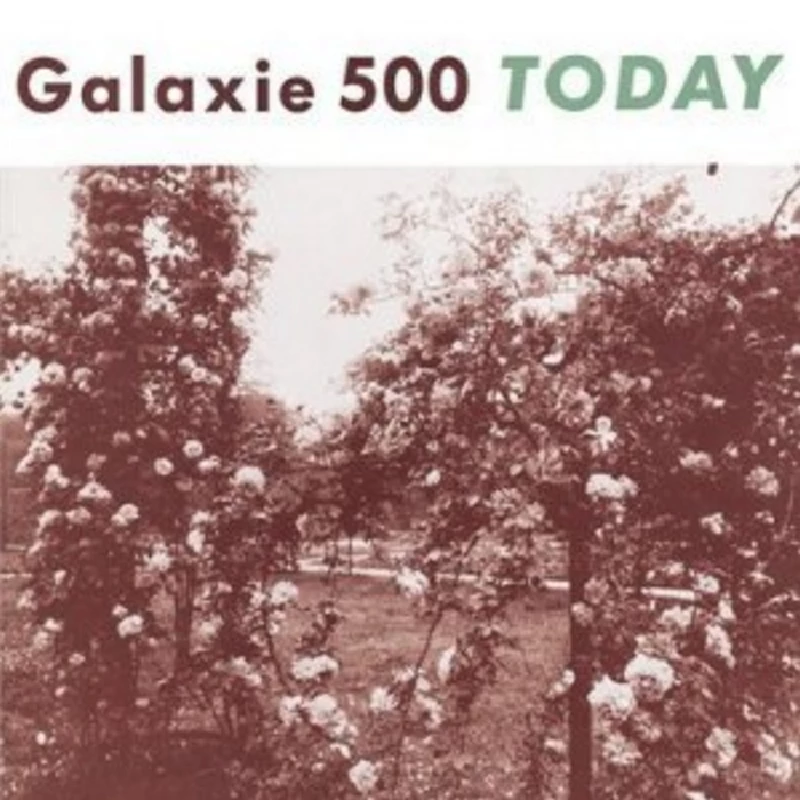
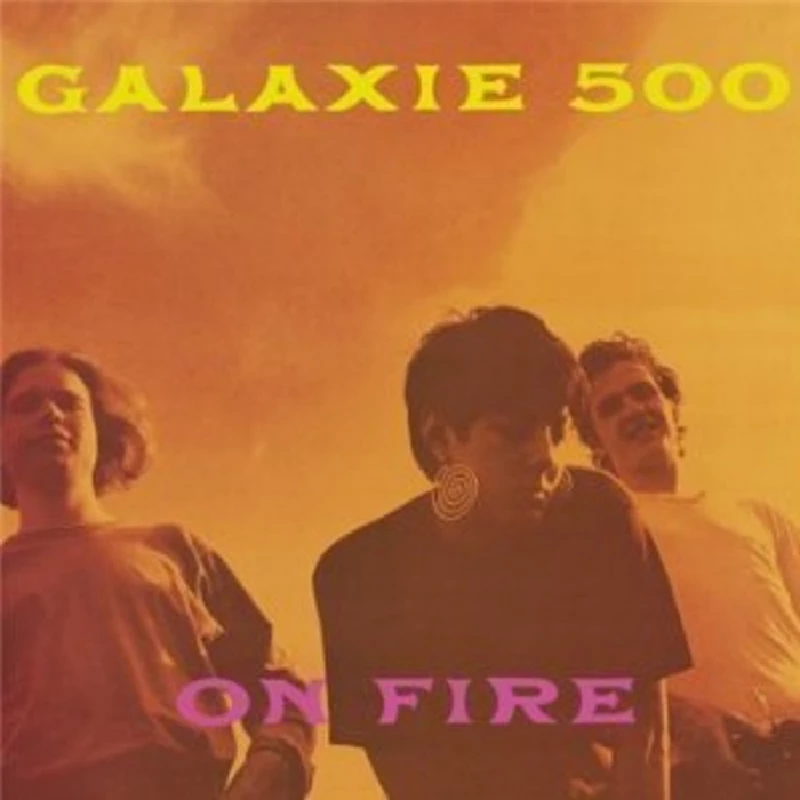
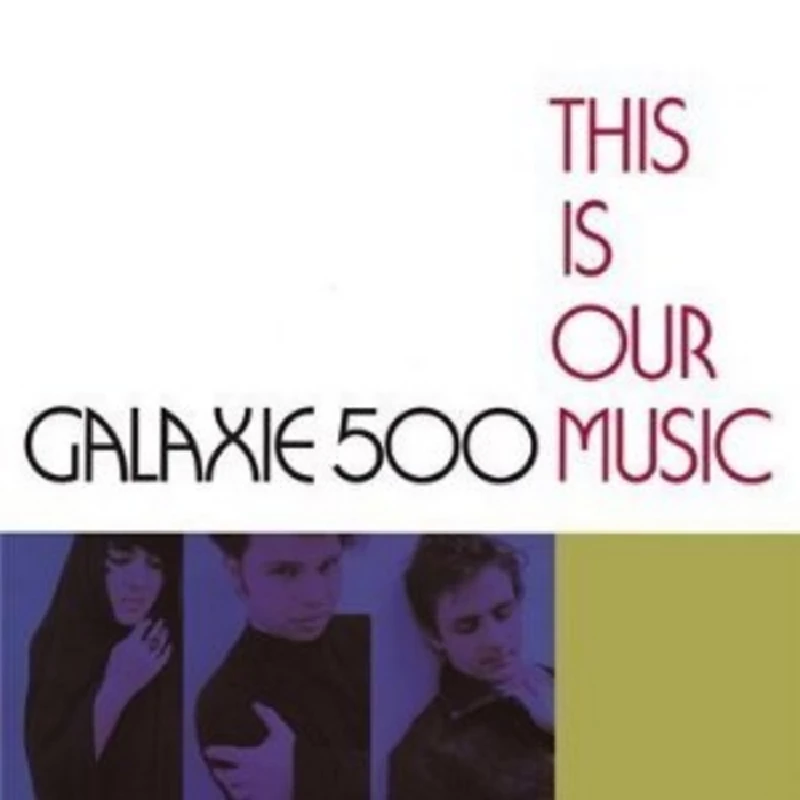
reviews |
|
Peel Sessions (2006) |
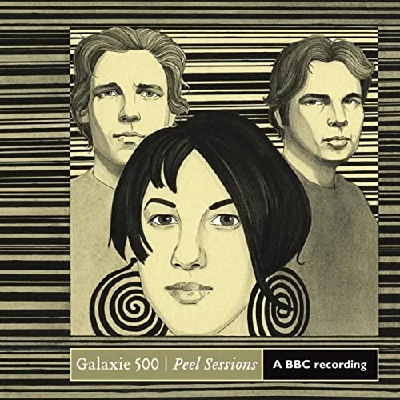
|
| Long overdue, but excellent release of many years-disbanded indie rockers and slowcore pioneers Galaxie 500's late 80's two John Peel sessions |
most viewed articles
current edition
Carl Ewens - David Bowie 1964 to 1982 On Track: Every Album, Every SongArmory Show - Interview with Richard Jobson
Colin Blunstone - Thalia Hall, Chicago, 16/7/2025
John McKay - Interview
Visor Fest - Valencia, Spain, 26/9/2025...27/9/2025
Bathers - Photoscapes 1
Billie Eilish - O2 Arena, London, 10/7/2025
Loft - Interview
Robert Forster - Interview
Sir Tim Rice - Interview
previous editions
Heavenly - P.U.N.K. Girl EPManic Street Preachers - (Gig of a Lifetime) Millennium Stadium, Cardiff, December 1999
Beautiful South - Ten Songs That Made Me Love...
Oasis - Oasis, Earl's Court, London, 1995
Prolapse - Interview
Coldplay - Wembley Arena. London, 16/8/2022
Boomtown Rats - Ten Songs That Made Me Love....
Peter Perrett - In Dreams Begin Responsibilities Interview Part One
Trudie Myerscough-Harris - Interview
Pixies - Ten Songs That Made Me Love...
most viewed reviews
current edition
Sick Man of Europe - The Sick Man of EuropeDavey Woodward - Mumbo in the Jumbo
Amy Macdonald - Is This What You've Been Waiting For?
Lucy Spraggan - Other Sides of the Moon
Phew, Erika Kobayashi,, Dieter Moebius - Radium Girls
Suzanne Vega - Flying With Angels
Bush - I Beat Loneliness
Blueboy - 2
Alice Cooper - The Revenge of Alice Cooper
Cynthia Erivo - I Forgive You
related articles |
|
Dean Wareham: Live Review (2014 |

|
| Chris O'Toole watches foemer Galaxie 500 and Luna front man Dean Wareham play a surprisingly increasingly upbeat set at the Islington Assembly Hall in London |
Pennyblackmusic Regular Contributors
Adrian Janes
Amanda J. Window
Andrew Twambley
Anthony Dhanendran
Benjamin Howarth
Cila Warncke
Daniel Cressey
Darren Aston
Dastardly
Dave Goodwin
Denzil Watson
Dominic B. Simpson
Eoghan Lyng
Fiona Hutchings
Harry Sherriff
Helen Tipping
Jamie Rowland
John Clarkson
Julie Cruickshank
Kimberly Bright
Lisa Torem
Maarten Schiethart